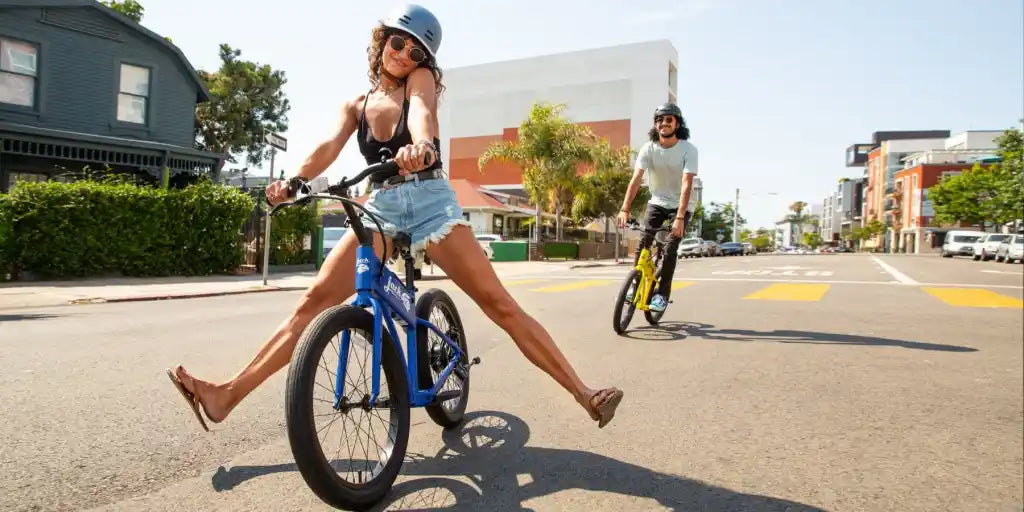
10 Key Things to Know Before You Buy an E-Bike
Share
Electric bikes (e-bikes) are changing the way we move—making daily commutes, outdoor adventures, and even grocery runs faster, greener, and more enjoyable. Whether you're trying to reduce your carbon footprint, replace a second car, or simply add a bit of fun to your fitness routine, an e-bike could be the perfect solution. But before you click 'Buy Now,' here are 10 essential things every smart shopper should know.
1. Understand E-Bike Classes
E-bikes in the U.S. are divided into three main classes:
Class 1: Pedal-assist only; top speed 20 mph
Class 2: Pedal-assist + throttle; top speed 20 mph
Class 3: Pedal-assist only; top speed 28 mph
These classifications affect where you can ride—some trails or bike paths may restrict access based on class. Be sure to check your local regulations before purchasing.

2. Range: Know What to Expect
Advertised e-bike ranges often assume ideal conditions and minimal power use. Real-world performance depends on terrain, rider weight, wind, and how often you rely on motor power.
Pro tip: Compare battery capacity in watt-hours (Wh) for a more realistic estimate of how far you’ll go on a single charge.
3. Choose the Right Style for Your Needs
E-bikes come in many shapes and purposes:
Commuter: Sleek, lightweight, optimized for city streets
Cargo: Built-in racks or platforms for carrying groceries or even kids
Mountain: Fat tires and suspension for rugged trails
Folding: Compact and portable for storage or public transport
Choose based on your daily habits, not just aesthetics.

4. Maintenance Is Similar to Traditional Bikes
Despite having motors, e-bikes require many of the same upkeep tasks: brake checks, tire inflation, chain lubrication. Batteries and motors are generally low-maintenance but may require occasional servicing or software updates.
Find a reliable local bike shop, especially if you’re ordering from a direct-to-consumer brand.

5. Battery Health and Charging Habits
Most e-bike batteries last between 500–1,000 full charge cycles. For longevity:
Avoid deep discharges
Don’t store fully charged for long periods
Store around 50% charge during off-seasons
Charging typically takes 4–6 hours using a standard wall outlet.
6. Pedal-Assist vs. Throttle
Pedal-assist amplifies your effort. Throttle lets you ride without pedaling. While both are useful, consider how you’ll use the bike.
Pedal-assist models are ideal for exercise and long rides, while throttle-equipped e-bikes offer extra convenience—especially in traffic or hilly areas.

7. Consider the Weight
E-bikes can weigh anywhere from 45–75 lbs, which might be an issue if you need to carry it upstairs or lift it onto a car rack. Make sure you’re comfortable with the size and weight of the model you’re considering.
8. Lock It Like You Mean It
E-bikes are prime targets for theft. Invest in:
A heavy-duty U-lock or folding lock
A secondary lock (e.g., chain or cable)
GPS trackers or AirTags for recovery support
Don't skimp on security—it’s a smart investment.

9. The Long-Term Savings Add Up
An e-bike might cost more upfront, but it pays for itself over time. You’ll save on gas, parking, car maintenance, and even gym fees if you ride for fitness.
Charging costs just a few cents per day—significantly cheaper than filling a gas tank.
10. Always Test Ride Before Buying
If possible, test multiple models. Pay attention to:
Fit and comfort
Acceleration and braking
Handlebar feel and visibility
No access to test rides? Look for detailed reviews or demo videos from real riders.
Final Thoughts
An electric bike is more than just a fun gadget—it’s a powerful tool for mobility, independence, and healthier living. With the right knowledge and a clear sense of purpose, you’ll find the perfect e-bike to fit your lifestyle.
